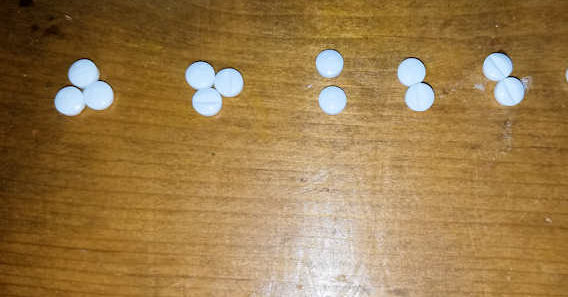So, it’s in the title: 4th day back on Prednisone today on November 19, 2021.
I see on Nov. 8, 2021 I say that the inflammation is finally going down. And, that was the case. And, I stopped taking classes because of the inflammation. So, I’ve been going to the gym daily but taking it a lot easier in there than previously. I must accept my physical limitations and situation even though sometimes that’s hard. I need to be thankful for what I have and what I can do!
But, about a week back I got sick of this inflammation just lingering and lingering so I got the Prednisone prescription.
Table of Contents
The thing I’ve learned about lumbar gluteal type inflammation…
Is that it can really really really fucking linger! I mean it amazes me the way it can just stick around for six weeks! I’m like: why won’t you subside already!
This is maybe the 4th time I’ve gone through the Prednisone since surgery 15 months ago.
“Damn, this stuff works!”
And, I had the same thought that I always have when I take the Prednisone for a few days: “Damn, this stuff works!”
It really does! It does give me some concern about the general lowering of the immune system etc. I’m not an expert on that, but it seems like it’s in your best interest for your immune system to be at its healthy level.
But, anyway…I wanted to use the Prednisone because in a way it’s sort of like “a reset.” Time alone doesn’t always get me to the reset, baseline.
So, that’s that.
How Prednisone Works
Prednisone: Mechanism of Action in Inflammation
Prednisone is a corticosteroid medication commonly used to manage inflammation and suppress the immune response in various medical conditions. It exerts its anti-inflammatory effects through a complex mechanism of action involving both genomic and non-genomic pathways. Understanding how prednisone works can provide insight into its therapeutic use for inflammatory conditions.
Genomic Mechanism: Prednisone is a synthetic glucocorticoid that binds to cytoplasmic glucocorticoid receptors (GRs) within target cells, such as immune cells and other tissues. Upon binding, the prednisone-GR complex translocates to the cell nucleus and influences gene transcription. This genomic effect results in the suppression of pro-inflammatory genes and the upregulation of anti-inflammatory genes (Adcock & Barnes, 2008). Prednisone’s genomic actions lead to reduced production of cytokines, chemokines, and other mediators involved in the inflammatory response.
Non-Genomic Mechanism: In addition to its genomic actions, prednisone also exhibits rapid non-genomic effects that contribute to its anti-inflammatory properties. These non-genomic effects involve interactions with cell membrane receptors and signaling pathways. For example, prednisone can inhibit the activity of phospholipase A2, an enzyme involved in the production of inflammatory lipid mediators, such as prostaglandins and leukotrienes (De Bosscher et al., 2010). By disrupting these lipid signaling pathways, prednisone further suppresses inflammation.
Modulation of Immune Response: Prednisone’s impact on immune cells plays a crucial role in its anti-inflammatory effects. It reduces the activation and proliferation of immune cells, such as T cells and B cells, and inhibits the release of inflammatory cytokines from these cells (Coutinho & Chapman, 2011). By dampening the immune response, prednisone helps mitigate the excessive inflammation seen in conditions like autoimmune disorders and allergies.
Therapeutic Applications: Prednisone is prescribed for a wide range of inflammatory conditions, including autoimmune disorders (e.g., rheumatoid arthritis, systemic lupus erythematosus), allergic reactions, asthma, inflammatory bowel disease, and certain skin conditions. By targeting various aspects of the inflammatory process, prednisone helps alleviate symptoms, reduce tissue damage, and improve overall well-being in individuals with these conditions.
References:
- Adcock, I. M., & Barnes, P. J. (2008). Molecular mechanisms of corticosteroid resistance. Chest, 134(2), 394-401.
- De Bosscher, K., Vanden Berghe, W., & Haegeman, G. (2010). Cross-talk between nuclear receptors and nuclear factor κB. Oncogene, 25(51), 6868-6886.
- Coutinho, A. E., & Chapman, K. E. (2011). The anti-inflammatory and immunosuppressive effects of glucocorticoids, recent developments and mechanistic insights. Molecular and Cellular Endocrinology, 335(1), 2-13.
Cpap posts coming soon
I also used my CPAP machine for the first time last night. Actually just got the CPAP machine yesterday. I’ll be sharing that experience here also for anybody interested. I’ll say this: we’re off to a good start. The dentist also told me I had four little cavities. That was frustrating. I’ll say more about that later.

